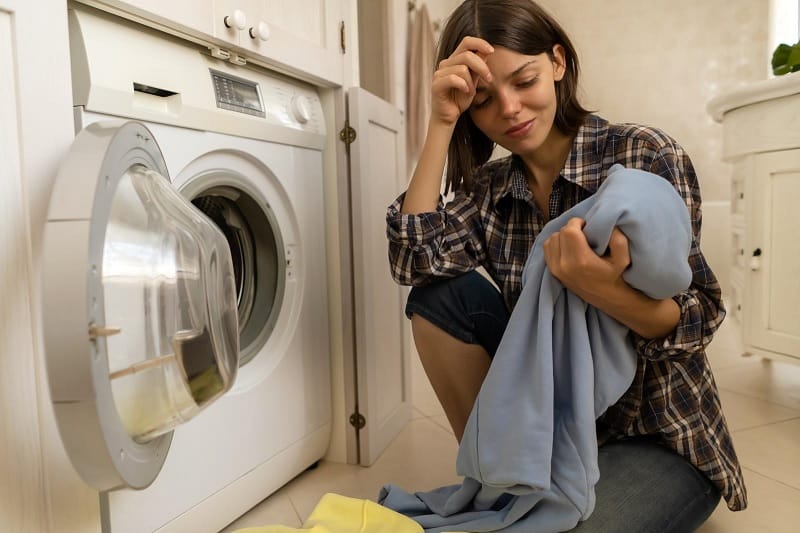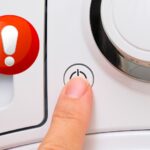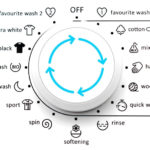Washing machines, like a lot of other appliances around our homes, start to age and break down with time. Sometimes these little issues can be sorted out in no time at all, and other times the work is more costly.
In the case of washing machines, there are so many intricate parts that can break, it can be difficult to figure out why the machine isn’t working as it should.
If you’ve got a washing machine that’s not spinning then read on to find out the cause for this. Plus, you’ll also find a solution to sort the problem out!
There are a number of reasons why your washing machine might not be spinning as it should.
Although you may feel that this is the end of the road for your appliance, you may be surprised to know that spinning issues can usually be fixed fairly quickly, and without much trouble too in many cases!
Below you’ll find a number of likely causes and solutions that’ll help to rectify the issue you’re facing.
Cause 1: Too Many Items in One Load
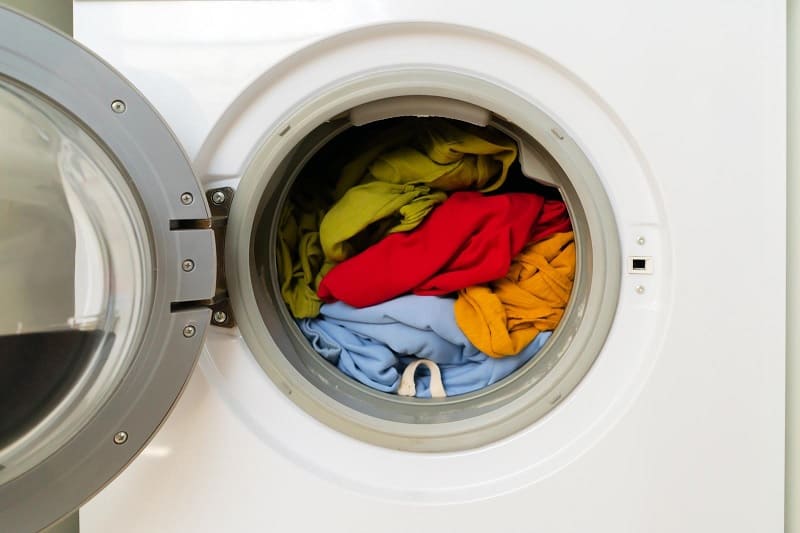
The most likely reason why your washing machine is not spinning is because the machine has been filled up with too many items.
This is really not an uncommon cause because we’ve all added too many clothes to a washing machine when we’ve been in a rush. Luckily, it can be rectified with little effort.
Solution
Have a look on the front of your washing machine for a number that tells you how many ‘kgs’ of weight you can add to your machine in one go. (This is also known as the ‘capacity guide’).
Every washing machine comes with a capacity guide and every machine has a different weight limit. For example, you could have a small 6 kg washing machine, or you could jump to the other end of the scale and have a 12 kg washing machine.
It doesn’t matter what kind of washing machine you have, it’s just important that you understand what the capacity number means.
Overloading or underloading your washing machine will hinder how it performs, and years of not following the guide may result in irreparable damage.
A machine that is too full will not be able to spin effectively, and if you do a final spin cycle the clothes inside will come out saturated in water.
So, check the weight guide on your washing machine, and only add in an appropriate load into your machine in one go. Exceeding the limit will only result in problems further down the line.
Not sure how you go about adding the right amount of clothing to your washing? You can discover how to measure out your laundry in our guide to capacity guides article!
Cause 2: Drainage Hose Is Blocked Up or Curled Up
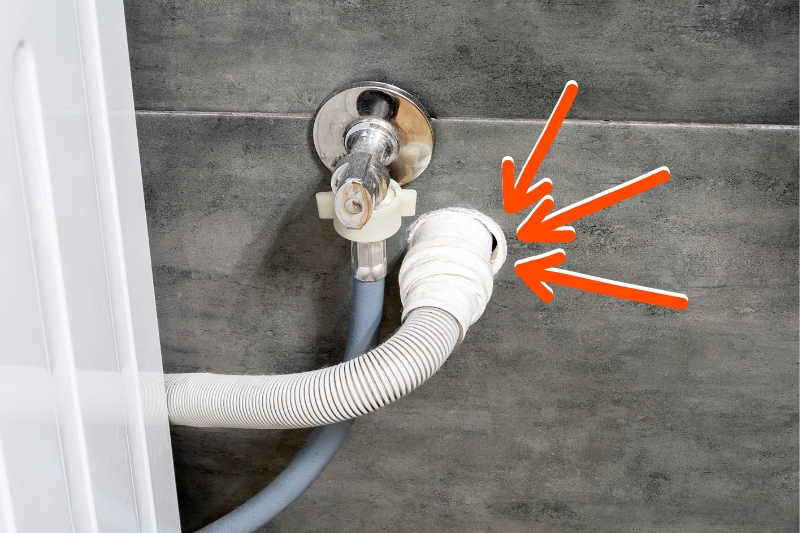
Another common reason why washing machines don’t spin is because the drainage hose is either blocked up or is twisted.
The drainage hose is responsible for removing the waste water out of the washing machine, and draining the water away. It’s a fairly straightforward process, but sadly old bits of clothing, buttons, fibres and even food in some cases get lodged in the hose.
Similarly, over time the hose can become warped, which prevents the water from flowing out correctly.
These issues prevent the water from draining away, which then stops the washing machine from performing a spin cycle because there’s still liquid in the drum.
Solution
You can solve these problems by removing and cleaning the hose, or by untwisting it.
All you need to do is turn the appliance off and carefully pull out the washing machine, so you have access to the back of it.
Next, gently remove the hose that’s attached to the machine itself and then do the same for the wall attachment (check your user handbook for further guidance as some models may vary). You should pop some old towels on the floor to catch any water.
When the hose has been removed, use a long, thin poking device to poke out any waste in the pipe. Don’t be too rough as you may damage the pipe. When you’re done hold one end of the hose under a tap, and watch to see if the water flows through the hose as it should.
Replace the hose, as per the instructions in your user handbook. Ensure that the hose is not twisted.
Cause 3: Door Hasn’t Been Closed Properly
Sometimes washing machines work even when the door hasn’t been closed properly. This isn’t usually the case with new models as they’ve got sensors that raise the alarm to issues like this.
However, if you’ve not closed the door properly this could hinder the spinning motion of the machine.
Solution
Make sure that the door is shut correctly before starting any type of cycle.
Cause 4: Unbalanced Load of Washing
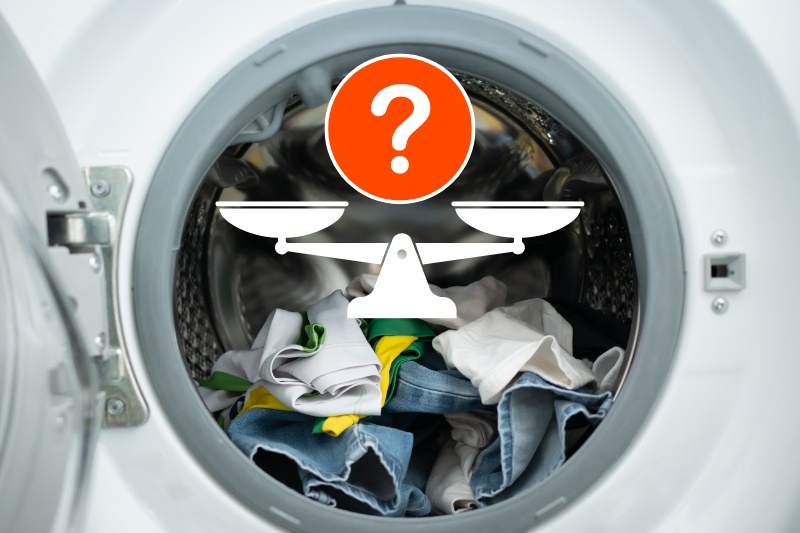
If you haven’t balanced your load of washing correctly prior to popping it into the machine, you may face spinning issues.
For example, if you decide to wash a single pair of shoes in a large capacity washing machine, the load will become off balance very quickly. This will impact how the machine runs and how it goes through cycles. Not to mention the noise an unbalanced load makes!
Solution
Try and balance out your loads, so cycles run as they should.
For example, if you’re only washing one pair of trainers, think about adding some towels to the drum, so that they help to balance each other out.
If you’re not sure how to balance your washing loads, have a look in your user manual for handy tips. This handbook may give you examples that you can try yourself.
Alternatively, you can check out our article that gives some weights and their equivalents that you can use as a guide.
Cause 5: Technical Difficulties Like Electrical Problems
Washing machines, like all other appliances, can suffer from general difficulties from time to time. These minor issues often cause chaos to begin with, but are usually rectified in no time at all.
For example, if you’re in the process of washing some laundry and you have a power cut, this’ll likely hinder your wash cycle and may stop the whole machine. This may then make you think that the machine is faulty and is malfunctioning, but in reality it’s just a little electrical issue.
Solution
If you think electrical difficulties are at fault, try restarting your washing machine and begin the cycle as you did before. If your machine works as it should, then you know a power problem is to blame.
Sometimes switching the washing machine off and on again also helps to reset it.
Cause 6: Washing Machine Has Become Off Balance
Over time a washing machine can become a little off balance, and this, in turn, can affect how the appliance works.
For example, a washing machine that’s not balanced correctly may think that it’s drained out all the water inside the drum, but there may be some water left behind. This then impacts the spin cycle, and appliance users think that the spin cycle has not taken place or is not sufficient.
Solution
There are usually many other clues that indicate that a washing machine is not balanced correctly. These include loud noises and a lot of vibrating.
These issues can be rectified by re-balancing the washing machine. You can usually do this by adjusting the legs on the machine.
Cause 7: Faulty Timer
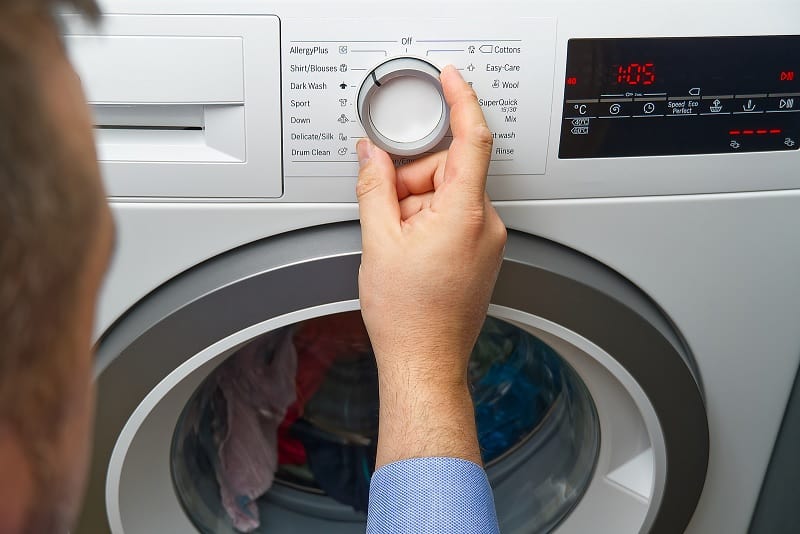
On occasions a spin cycle doesn’t work as it should because the timer on your washing machine is broken. This means that the spin cycle doesn’t actually know when to start and it may start at the wrong time. For example, a spin cycle may begin when there is still some water present in the drum.
Solution
To fix this issue you will need to read your user handbook to find out what new parts you need, how to get to the timer and how to sort it out. Each make and model of washing machine will be different, so follow the advice given by your washing machine’s manufacturer.
Alternatively, you could hire a professional washing machine fixer in your local area! Always do your research and ask plenty of questions before you hire someone to do the work.
Cause 8: Bearings Have Become Faulty
The bearings in a washing machine start to break down with years of use, so in time they’ll need to be greased or replaced.
However, faulty bearings can impact a washing machine’s spinning motion, because they actually help the drum to spin in the first place.
Solution
Bearings can be treated or replaced and you can read more about them in our guide. But do keep in mind that this can sometimes be a big job, and in this case, it may be worth calling in a professional for help with the matter.
Cause 9: Excess Detergent
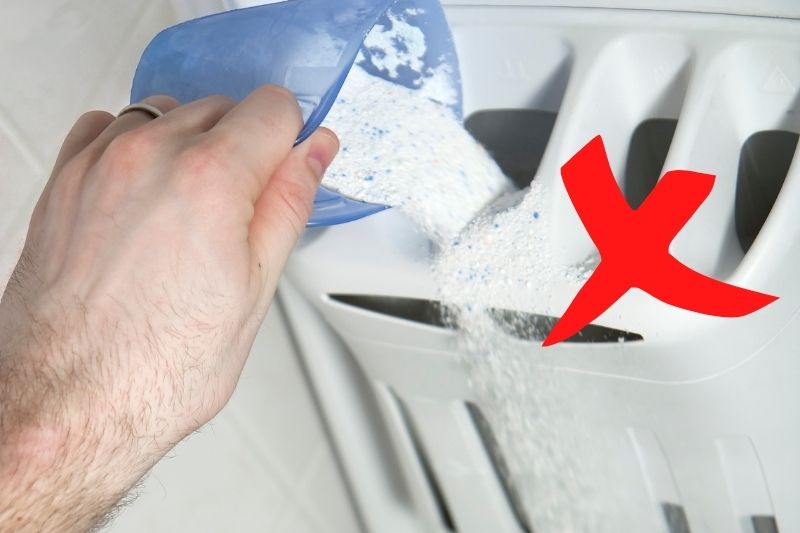
Interestingly using too much detergent can be bad for your clothes, for your washing machine and your spin cycles.
Too much detergent will create excess foamy soap inside the drum. This then means that the washing machine has to get rid of it. This consequently may lead to the machine stopping or postponing any kind of spin cycles while it ejects the extra foam that’s been created.
Solution
Only pop in as much detergent as you need. If you’re using a liquid detergent, you usually use the cap to measure out your dose. If you’re not sure how much washing powder to use, follow the instructions in our guide.
Cause 10: Drive Belt May Be Worn and Broken
After years of use a drive belt inside a washing machine will become worn and may even break entirely. In this case, a spinning motion won’t occur as it should, and clothes will not be agitated and washed in the machine.
Solution
First of all, you need to test to see if this is the problem. To do this all you need to do is pop your hand inside the empty drum and move it around. If the drum moves around with ease the drive belt has likely broken. If there’s some resistance when you move the drum, then the drive belt is working as it should.
To fix a broken drive belt you’ll need to call a professional washing machine fixer in.
Cause 11: Motor Is Broken
A washing machine is an appliance that gets used weekly, if not daily, in some homes, so it’s no wonder that after years of use the motor will give up.
A motor that’s coming to the end of its days will cause many problems for a washing machine, and this includes the spinning feature.
Solution
A motor can be replaced with a new one, but this is a job for a professional as there are many intricate parts and wires to consider.
Plus, depending on the make and model of your washing machine, it may be worth considering getting a new appliance. A broken motor may mean that other parts in the machine, that are of a similar age, are about to break with continuous wear too.
Final Thoughts
- Try not to overfill your washing machine.
- Always keep an eye out for faulty parts in your washing machine.
- Sort out issues as soon as they appear – this will stop the problem from getting worse.
- Cleaning and maintaining a washing machine is essential and it will keep it working.
- Make sure that you use your washing machine correctly – read your user handbook.

Bethan has a passion for exploring, reading, cooking and gardening! When she’s not creating culinary delights for her family, she’s concocting potions to keep her house clean!
